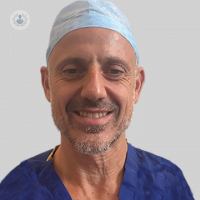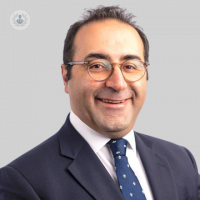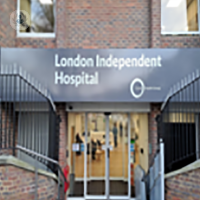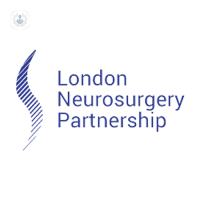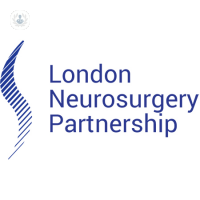Endoscopic skull base surgery
Mr William E. Grant - Otolaryngology / ENT
Created on: 02-01-2013
Updated on: 12-18-2023
Edited by: Aoife Maguire
What is this treatment?
Endoscopic skull base surgery allows minimally invasive surgery to be performed through the nasal cavity, using endoscopes, without having to open the skull.
The skull base supports the brain and separates it from the rest of the head. The nerves and blood vessels that go to the brain are below, and under them are the nasal passages, sinus cavities, facial bones, and chewing muscles.
This technique is preferred over traditional surgery as it has many advantages, including:
- It takes less time
- Allows operating in previously inaccessible areas and on large tumours
- No facial scars
- Improves functional results
- Shorter hospital stay.
Why would you do it?
This treatment is used for brain tumours or nasal cavity roof injuries, next to the cranial cavity. It enables treating tumours that were unable to be treated before.
This can be used to treat a variety of conditions, including:
- Pituitary tumours
- Clivus and odontoid
- Cerebrospinal fluid fistulas
- Tumour resection in the anterior, middle, and pterygomaxillary fossa.
What does it involve?
This minimally invasive surgery, enables an endoscopic approach through the nasal cavity, without having to open up the skull.
The optical and endoscopic tools used in this procedure are inserted through the nasal cavity. These allow the surgeon to see the area being operated on in high definition through stereoscopic cameras with optical fibres. This allows it to be seen three-dimensionally and in colour.
Being able to see the brain and facial nerves helps ensure that they don’t get injured.
How to prepare for it
A multidisciplinary team of specialists is required for this procedure, including; a neurosurgeon, an otolaryngologist, and a neurophysiologist.
The specialist will ask for the patient’s medical history, and arrange for blood tests and an ECG to be carried out, among other tests.
The patient will be given a general anaesthetic so as to not feel pain during the procedure. The patient will breathe through mechanical ventilation.
Post-operative care
This procedure does not tend to have many complications, although this may differ depending on the level of difficulty of the operation.
Once the anaesthetic has worn off, the specialist will carry out a neurological examination and comment on how the surgery went. Depending on the type of procedure carried out, the patient may be in the intensive care unit, and they will need to remain in hospital for a few days.
Alternative treatments
Endoscopic skull base surgery is one of the most advanced types of surgery today, it is a minimally invasive technique. Alternatives include a craniotomy.

